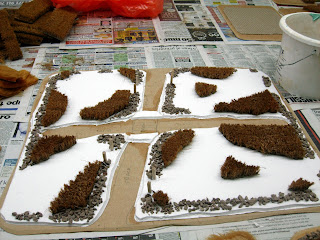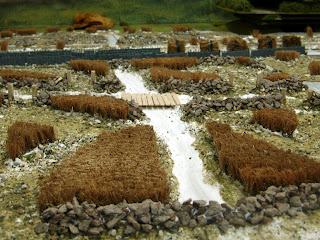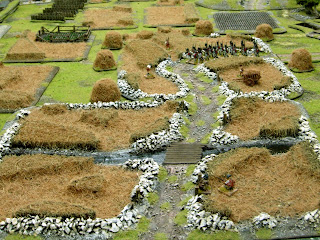I don't get to play very often but as I have the day off from work on Monday my mate is coming over for a game. I am going to try and sort some rules out for a War of the Roses game, adapting Too Fat Lardies 'Sharp Practice'.
I have just set the table up ready for Monday using some of the terrain I recently made. There is probably a little too much clutter for a game but I just fancied getting some of the new stuff on the table.
There are a couple of commercial buildings on the table and the stream section and the hill with the road running through it are from 'Last Valley' which I have re-painted and flocked to match my terrain.
Don't look to close at the figures as they were painted a while ago using Army Painter and there was a lot of experimenting with different colours for this method.
I will post some pictures of the game at some point in the future.





































































